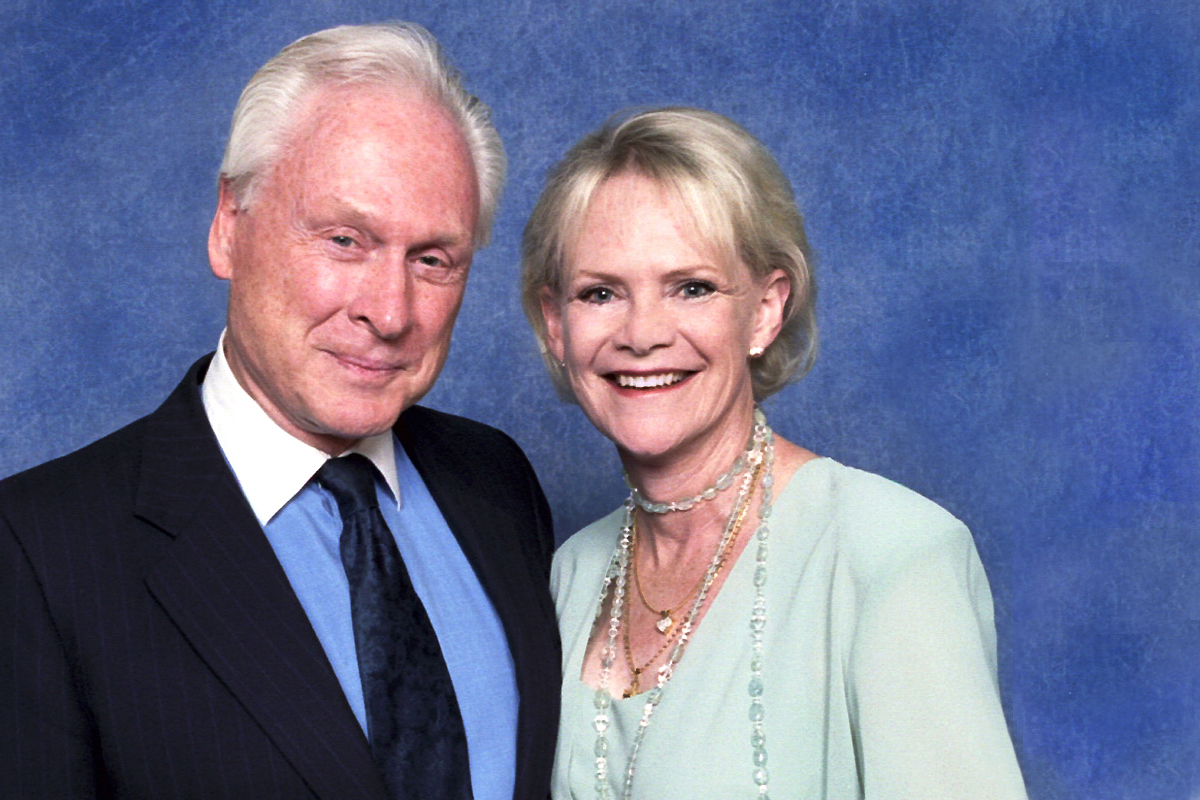USC Trustee Malcolm Currie, PhD, and his wife, Barbara, have given $10 million toward the endowment of the Keck School of Medicine of USC and construction of the USC Michelson Center for Convergent Bioscience.
In recognition of their investment in the university’s biomedical research and education, two facilities will be named in honor of the Curries: a new Health Sciences Campus residence hall that will open in 2016 and the lobby of the USC Michelson Center.
An engineering physicist who was chair and CEO of Hughes Aircraft, Malcolm Currie has served as a member of the USC Board of Trustees since 1989 and chaired the board from 1995-2000. He and his wife, Barbara, have been generous supporters of the university, endowing the Malcolm R. Currie Chair in Technology and the Humanities in 2008. The chair, currently held by USC President C. L. Max Nikias, was USC’s first endowed faculty position honoring exceptional achievements in both realms.
“The Trojan Family will be forever grateful to Mal and Barbara for their leadership, generosity and commitment to our university,” Nikias said. “Their outstanding support of USC’s medical research and education has done so much to transform Los Angeles into a vibrant center for biomedical innovations, and it has kept the university at the very fore of this growth.”
The Malcolm and Barbara Currie Residence Hall will add 450 beds for HSC students. The building, now under construction, will include a day care facility for students with families.
The USC Michelson Center will be the largest building on the University Park Campus when completed in 2017. It aims to be a catalyst for a biomedical research corridor in Los Angeles. The Malcolm and Barbara Currie Lobby within the 190,000-square-foot space will be the gateway to a center where engineers and scientists will work together to advance bioscience and bio-engineering research.
“I feel very privileged to have been part of USC’s rise to recognition as one of the world’s great research universities, and I look forward to USC’s continuing major contributions to society from our focus on the convergence of the engineering and medical sciences,” Malcolm Currie said.
A defense and aerospace industry leader whose work underpins today’s national security systems, Malcolm Currie served in the 1970s as Undersecretary of Defense for Research and Engineering and as the U.S.-designated national armament director in NATO. He is also known for leading Hughes Aircraft from 1988 to 1993.
— Lynn Lipinski


